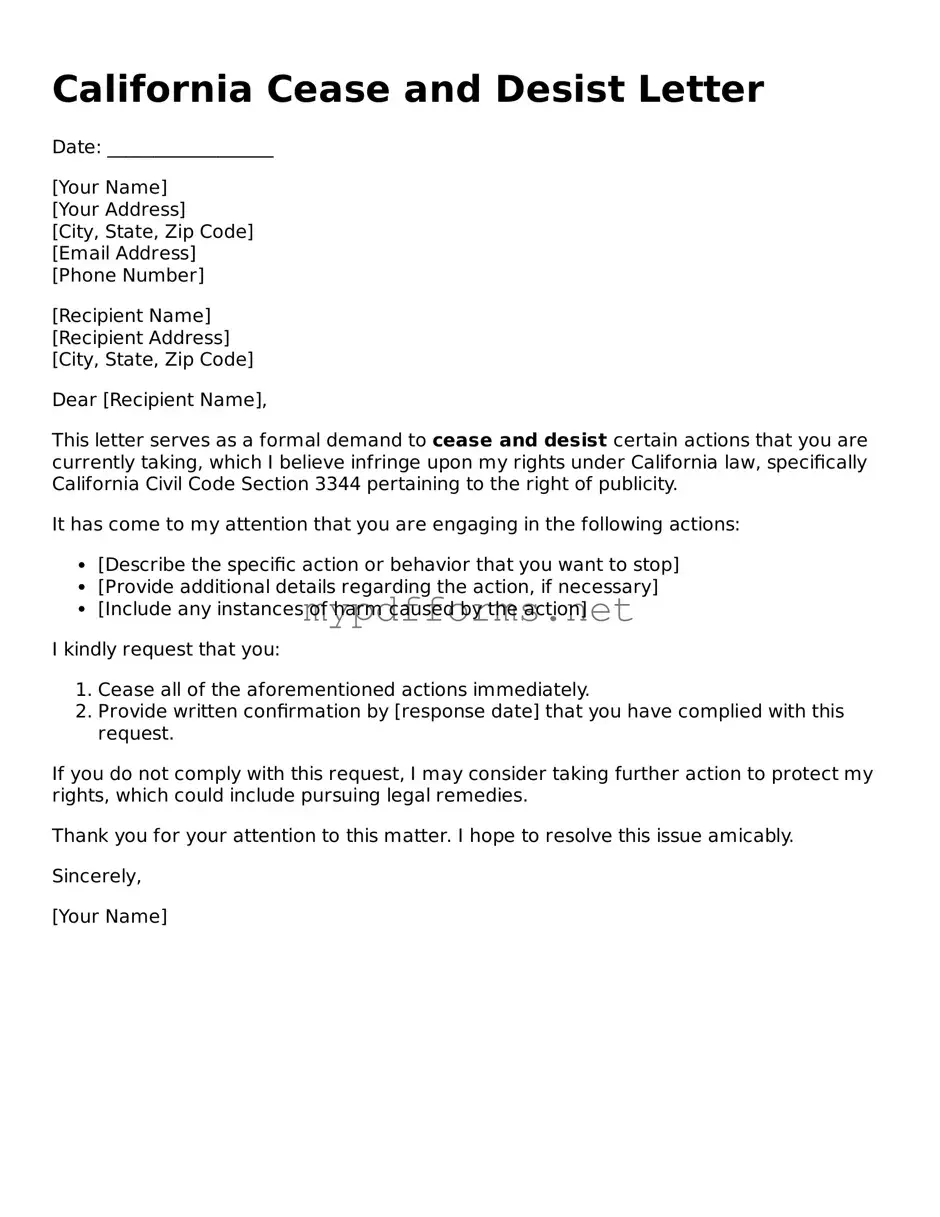The California Cease and Desist Letter is similar to a demand letter. A demand letter is a formal request for a specific action, typically seeking resolution before legal action is pursued. Both documents serve as a means to communicate grievances and demand compliance from the recipient. While a cease and desist letter specifically instructs the recipient to stop certain actions, a demand letter may also request compensation or other remedies. The tone in both documents is often assertive, emphasizing the seriousness of the situation.
Another document akin to the California Cease and Desist Letter is a warning letter. A warning letter serves to notify an individual or entity of a potential violation or misconduct. Like a cease and desist letter, it aims to prevent further issues by addressing the behavior directly. However, warning letters may not always carry the same legal implications as cease and desist letters, which often hint at potential legal action if compliance is not achieved. Both documents can be used to document a formal communication trail.
For those looking to take action, utilizing the appropriate legal documentation is key. One such document is the crucial Cease and Desist Slander and Libel Letter form, which can help address defamatory statements effectively.
A third similar document is a settlement letter. A settlement letter proposes terms for resolving a dispute outside of court. While a cease and desist letter demands an immediate halt to specific actions, a settlement letter often outlines terms for resolution, including compensation or other agreements. Both documents are tools for negotiation and can help avoid litigation. They may also reflect the seriousness of the sender’s position regarding the matter at hand.
The fourth document is a letter of intent. A letter of intent outlines the preliminary understanding between parties regarding a future agreement. Although it is less confrontational than a cease and desist letter, it can still serve as a formal declaration of intent to take action if necessary. Both documents establish clear communication between parties and can set the stage for further legal proceedings if the issues are not resolved amicably.
A fifth document similar to the California Cease and Desist Letter is a legal notice. A legal notice informs a party of their obligations or rights under the law. Like a cease and desist letter, a legal notice is often used to alert the recipient to specific actions that may lead to legal consequences. Both documents serve as a warning and aim to prompt compliance, though a legal notice may encompass broader legal issues rather than focusing solely on stopping a particular action.
Lastly, a non-disclosure agreement (NDA) can be compared to a cease and desist letter in terms of its purpose to protect interests. An NDA prevents parties from disclosing confidential information. While it does not directly instruct someone to stop an action, it restricts behavior that could harm the disclosing party. Both documents emphasize the importance of compliance to avoid potential legal repercussions and serve as protective measures in various contexts.
